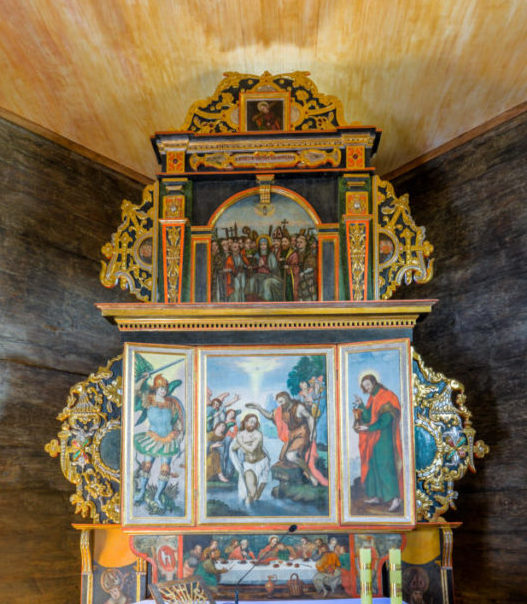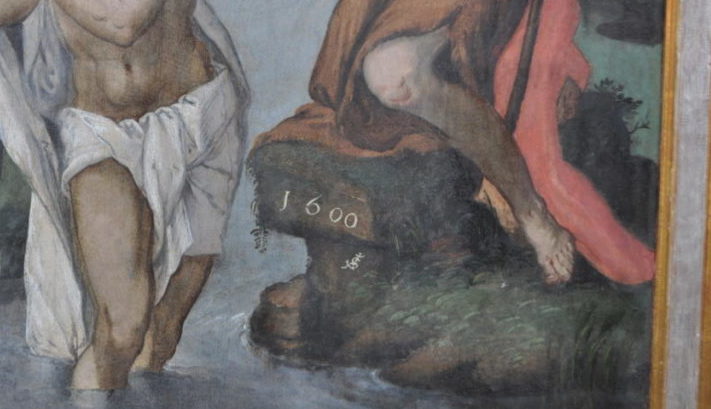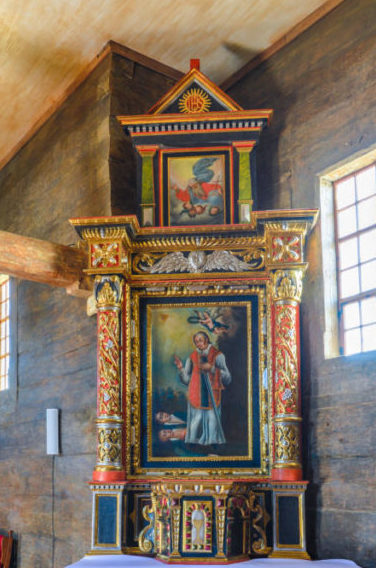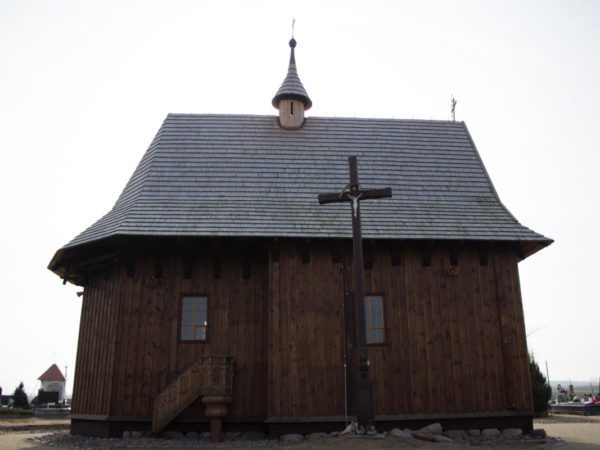Wooden monuments
ONE OF THE OLDEST WOODEN CHURCHES IN GREATER POLAND
The church of St. John the Baptist in Ołobok was erected in the first quarter of the 16th century due to Cistercian nuns who were brought here from Trzebnica by Władysław Odonic as early as 1213. It is one of the oldest wooden churches in Greater Poland, which preserved in its late-Gothic, hardly changed form. It is characterized by one nave with a narrower chancel, a high, gabled wood-shingled roof, wide eaves. On the top there is a ridge turret.

Especially noticeable are decorated beams called hitches, which are attached to protruding beams of the ceiling and which function is to support the joining of walls with the roof.
What is curious about the church are its windows. In the northern wall, the windows were put as late as the 18th century, because earlier it was believed that this cardinal point is subject to evil spirits. That was how people tried to limit the access of evil forces to churches.


Another unusual historical object is a 17th-century pulpit attached to the outer side of the wall of the church’s chancery (in the 18th century it was replaced with a new construction). That was a practical use of the stairs which were the integral part of the pulpit, to use the bells from 1746 and 1799 hanging below the church’s eaves freely.
“BOX” FULL OF BIBLICAL TEXTS
Late-renaissance main altar of the church in Ołobok is a true constructional masterpiece. Before it took the shape of a so called pentaptych, which is a 5-part “box” with special panels for images of saints, many craftsmen were working with it: loggers, carpenters, woodcarvers.
Depending on liturgical needs, particular wings of the altar were opened or closed. Due to this, the faithful could gradually observe all scenes presented in specific panels.

In the pentaptych of Ołobok the following is presented:
- Christ’s baptism in the main panel
- St. Michael the Archangel in the left inside wing
- St. John the Apostle and Evangelist in the right inside wing
8 Passion scenes visible when the altar is closed, that is in the outside wings.
The images were painted on boards by Adam Scholz from Wrocław who signed his work. As a Renaissance artist, he put his initials and date “1600” on a slope where St. John the Baptist is kneeling.
In the altar’s crowning there is an image of Mother of God in a company of saints over whom Holy Spirit is hovering in a shape of a dove.

ST. VALENTINE – THE PATRON SAINT OF LOVERS
By the south wall of the nave there is a late-renaissance altar, dated to the middle of the 17th century. In the main panel between richly decorated columns with a foliate ornament, there is an image of St. Valentine. In the Middle Ages, the saint was called as an intercessor during severe illness, especially neurological disorders and epilepsy. On the other hand, later especially in England and the United States his cult as a patron saint of lovers spread.
St. Valentine, who lived during times of the Roman empire, was a famous bishop as well as doctor. During many persecutions of Christians, he often helped the convicted during their trials and executions. Soon he got captured and was beheaded with a sword on February 14.

ENTHRONED MADONNA
Madonna with Child from 1320 comes from the church in Ołobok and is currently a deposit in the Archdiocesan Museum in Poznan. Heavily time-worn, the sculpture still represents a high artistic value and an original message. The wooden Madonna is shown in a very majestic posture, and the form refers to the theological Seat of Wisdom which conveys an idea of Mary as the Lotos Incarnate that is Divine Wisdom.

What is striking is first and foremost the disproportion between relatively short legs and a slender torso, delicate face and too slim a neck. The static posture is highlighted by the figure covered with a draped robe with linear folds. Baby Jesus who is lying in her right arm is dressed in a cloth which imitates the pattern of Mary’s robe. Solemn atmosphere and the eternal constancy of Mother and Her Child subtly contrasts with Madonna’s sad expression. The dogma of Her divine parenthood as well as the acceptance of fate – the happiness of giving birth to a Son and sadness over His suffering and death, are enhanced here.
Indulgences
first Friday after the octave of Corpus Christi (Sacred Heart of Jesus)





